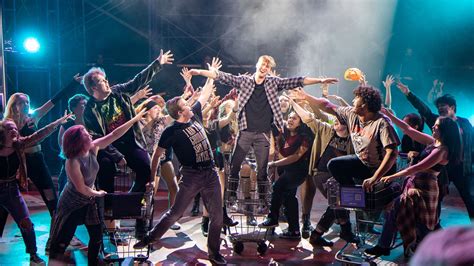Performimg Arts

The performing arts have been a cornerstone of human expression and entertainment for centuries, providing a platform for artists to convey emotions, tell stories, and bring people together. From the majesty of opera to the intimacy of solo performances, the performing arts encompass a wide range of disciplines, including music, dance, theater, and more. In this article, we will delve into the world of performing arts, exploring its history, key components, and the impact it has on society and individuals.
History of Performing Arts

The history of performing arts dates back to ancient times, with evidence of musical and theatrical performances found in civilizations such as Egypt, Greece, and Rome. In these early societies, performances were often used to tell stories, honor gods, and celebrate important events. As civilizations evolved, so did the performing arts, with new forms and styles emerging. The Renaissance, for example, saw a resurgence in interest in classical Greek and Roman theater, while the 19th and 20th centuries gave rise to modern dance, jazz, and musical theater.
Key Components of Performing Arts
There are several key components that make up the performing arts, including music, dance, theater, and performance art. Music is a universal language, capable of evoking emotions and creating a sense of community. It encompasses a wide range of genres, from classical to popular, and is often used in combination with other art forms, such as dance and theater. Dance, with its emphasis on movement and expression, is another fundamental component of the performing arts, with styles ranging from ballet to hip-hop. Theater, which includes plays, musicals, and other forms of scripted performance, provides a platform for storytelling and social commentary. Performance art, which often pushes the boundaries of traditional art forms, challenges audiences and expands our understanding of what it means to be a performer.
| Performing Art Form | Description |
|---|---|
| Music | A universal language that evokes emotions and creates community |
| Dance | A physical expression of emotion and storytelling |
| Theater | A platform for storytelling and social commentary |
| Performance Art | A challenging and evolving form that pushes boundaries |

Impact of Performing Arts

The performing arts have a profound impact on society and individuals, providing a means of expression, a source of entertainment, and a way to bring people together. Research has shown that participating in the performing arts can have a positive effect on cognitive development, self-esteem, and social skills. Moreover, the performing arts provide a platform for social commentary and critique, allowing artists to address pressing issues and challenge societal norms. The economic impact of the performing arts should not be overlooked, as they contribute significantly to local and national economies through ticket sales, tourism, and job creation.
Real-World Examples
There are countless examples of the performing arts making a positive impact in communities around the world. Theater companies have used performances to raise awareness about social issues, such as racism and inequality. Dance programs have been implemented in schools to help children develop physical and emotional skills. Music festivals have brought together diverse communities, promoting unity and celebrating cultural heritage. These examples demonstrate the power of the performing arts to inspire, to educate, and to bring people together.
What are the benefits of participating in the performing arts?
+Participating in the performing arts can have a positive effect on cognitive development, self-esteem, and social skills. It also provides a means of expression, a source of entertainment, and a way to bring people together.
How do the performing arts contribute to the economy?
+The performing arts contribute significantly to local and national economies through ticket sales, tourism, and job creation. They also provide a platform for social commentary and critique, allowing artists to address pressing issues and challenge societal norms.
What is the role of music in the performing arts?
+Music is a universal language that evokes emotions and creates a sense of community. It encompasses a wide range of genres and is often used in combination with other art forms, such as dance and theater.



